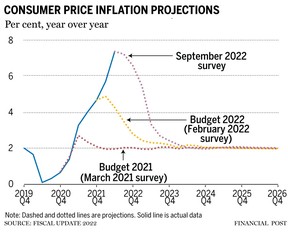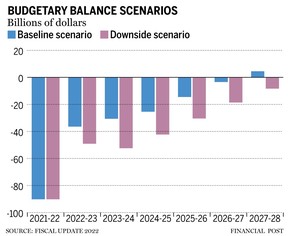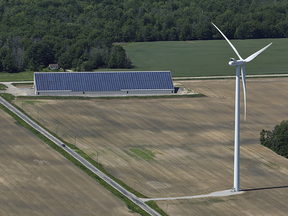Naimul Karim -Financial Post

Industry Minister François-Philippe Champagne said that following a “multi-step national security review process,” the government has asked Sinomine Rare Metals Resources Co., Chengze Lithium International Ltd. and Zangge Mining Investment Co. to divest from Canada’s Power Metals Corp., Lithium Chile Inc. and Ultra Lithium Inc.
Ottawa has ordered three Chinese companies to divest their investments in three Canadian junior lithium miners as it looks to strengthen its hold on this country’s critical minerals projects amid rising demand for the commodities.
Industry Minister François-Philippe Champagne said that following a “multi-step national security review process,” the government has asked Sinomine Rare Metals Resources Co., Chengze Lithium International Ltd. and Zangge Mining Investment Co. to divest from Canada’s Power Metals Corp., Lithium Chile Inc. and Ultra Lithium Inc., respectively.
These steps were taken under section 25.4(1) of the Investment Canada Act (ICA), which gives the government the power to require non-Canadians “to divest themselves of control of” a Canadian business if it believes the investment could be injurious to national security.
“In accordance with the ICA, foreign investments are subject to review for national security concerns, and certain types of investment — such as those in the critical minerals sectors — receive enhanced scrutiny,” Champagne said in a statement. “Therefore, we reviewed a number of investments in Canadian companies engaged in the critical minerals sector, including lithium.”
Calgary-based Lithium Chile said “it was reviewing the options and potential outcomes of the order with Chengze.”
It added that the investment made by Chengze has given Lithium Chile a “significant cash position,” but the government’s order “does not affect” the company’s assets or lithium resources.
“The assets operated by (Lithium Chile) are owned through its South American subsidiaries in Chile and Argentina. The assets operated by the company are not Canadian assets, nor the company’s significant lithium resource,” Lithium Chile said in a statement. “The investment into the company by Chengze, does not equate to a control position, nor does it give Chengze special rights in respect to the outcome or decisions made by the company.”
Lithium Chile said the investments by Chengze in 2022 followed ICA policies and were approved by the TSX Venture Exchange.
The company added that it values the experience and expertise of Chengze and its ability to “efficiently develop its assets.”
Jonathan More, chief executive of Power Metals, said the company was reviewing the matter with legal counsel.
“While we are surprised by Canada’s stance towards Chinese investment into Canada’s critical minerals industry, it clearly shows that they see the opportunity and assets of Power Metals as too valuable for such foreign investment,” he said in a statement.
Patricia Mohr, an economist and former vice-president at the Bank of Nova Scotia, said the government has a tricky situation on its hands since Canada needs to attract foreign investment to its critical mineral industry, but there can be questions about the net benefits for the country when state-owned or controlled enterprises are involved.
“China dominates world supplies of many critical materials … there is some need to prevent supply chain vulnerabilities from affecting industry in Canada and the West, particularly as the electric-vehicle and renewable-energy industries develop,” she said.
Pierre Gratton, chief executive of the Mining Association of Canada, said the industry is very sensitive to both the geopolitical context and the difficult choices the government and its allies are facing.
“Access to capital and markets is essential to allowing Canada to provide responsibly sourced critical minerals required for global decarbonization,” he said.
The government’s orders come days after Canada raised the bar that foreigners must clear to join the country’s critical minerals industry. Any attempt by a state-owned enterprise to purchase assets in the sector can now trigger Part IV.1 of the ICA, which could require an extended review on the grounds that it could be “injurious” to national security.
“These new and strengthened efforts will improve the administration of Canada’s investment review regime. To ensure transparency, we will continue to announce outcomes of such orders going forward,” Champagne said in a statement.
He added that the government’s decisions were based on the advice of “critical minerals subject matter experts, Canada’s security and intelligence community, and other government partners”
The policy shift comes after a parliamentary committee in March said Canada should launch a full security review for every investment by a company influenced by an “authoritarian state,” since that meets the ICA’s threshold of potentially being “injurious to national security.”
Champagne’s decision to opt not to do so in January when Chinese miner Zijin Mining Group Co. Ltd. acquired Neo Lithium Corp., a mining company formerly listed in Canada that owned a lithium project in Argentina, led to controversy.
Former Conservative leader Erin O’Toole criticized the federal government for allowing Zijin Mining to acquire Neo Lithium since the demand for critical minerals such as lithium needed for electric batteries was rising. He said the government had not done a proper security review.
Champagne at the time said the deal was thoroughly reviewed . He also said Neo Lithium’s project would not be mining for lithium hydroxide but lithium carbonate, which Canada would not be relying on to produce electric batteries.
China dominates the electric-vehicle (EV) supply chain through its refining and processing industries, even though most of the metals required by EVs, such as lithium, nickel and cobalt, are mined outside the country.
Democratic countries in North America and Europe have been banding together to offset China’s dominance of the EV supply chain.
For example, Washington’s recently passed Inflation Reduction Act offers a US$7,500 subsidy to encourage the production of EVs in North America, while Minister of Finance Chrystia Freeland has repeatedly stressed the need for “ friendshoring ,” an idea that democratic allies would build supply chains through each other’s economies and tackle the influence of authoritarian regimes in the energy sector.
Zhao Lijian, a spokesperson for China’s foreign ministry, urged Canada to stop suppressing Chinese companies.
“The Canadian side has overstretched the concept of national security and placed arbitrary curbs on normal trade and investment cooperation between China and Canadian companies,” he said at a press conference on Nov. 3. “This is against the principle of market economy and international economic and trading rules the Canadian side has been talking about. It does no good to the development of the target sectors, and hurts the stability of global industrial and supply chains.”
Email: nkarim@postmedia.com | Twitter: naimonthefield
Forced sale of strategic mineral interests important step to boost security: experts
TORONTO — The move by the federal government to force Chinese companies to sell their investments in three critical mineral companies is being called a meaningful and necessary escalation of Canada's defensive posturing on strategic assets.
The order Wednesday from Innovation Minister François-Philippe Champagne, which followed an announcement last week that he would be limiting foreign state-owned companies in the industry, shows the government is responding to a changing world, said Aaron Shull, managing director at the Centre for International Governance Innovation.
"They're on their front foot now," said Shull.
The decision to force Chinese divestment of critical mineral companies Ultra Lithium Inc., Lithium Chile Inc. and Power Metals Corp. comes in sharp contrast to the government allowing a Chinese state-owned investor to take over Neo Lithium Corp. in January without an in-depth security review.
The shift comes as hostile states use every tool short of armed conflict, whether diplomatic, informational, or economic, to advance their interests that are often not aligned with Canada's, said Shull.
"The world is fundamentally different," he said. "Adversarial states are leveraging every aspect of state power that they possibly can."
The timing of the move comes weeks after Deputy Prime Minister Chrystia Freeland gave a speech at the Brookings Institute in Washington, D.C., expanding on the 'friend-shoring' strategy she and U.S. Treasury Secretary Janet Yellen have been speaking about for months, which focuses on the need to close ranks on trade issues with countries whose interests are aligned.
It also comes after the U.S. moved in early October to restrict the exports of microchips and chipmaking equipment to China, as well as restrictions on U.S. citizens working for Chinese chipmakers, as economic actions gain momentum.
"This is all connected. I don't think there's a coincidence here," said Shull.
Canada has taken actions against Chinese state-owned investors in the past, including blocking efforts to take over TMAC Resources Inc. in 2020 and Aecon Group Inc. in 2018, and orders for China Mobile to divest its Canadian affiliate CMLink in late 2021, but this latest move comes as Canada increasingly recognizes mineral production as a security issue.
In announcing the latest decision, Champagne said in a written statement that the government will act decisively when investments threaten national security or critical minerals supply chains.
Critical minerals and metals, such as lithium, cadmium, nickel and cobalt, are essential components of everything from wind turbines and electric cars to laptops, solar panels and rechargeable batteries.
China is the dominant player in critical minerals refining and processing, as well as in the manufacturing supply chain of battery cell components. But China does not produce a lot of the minerals itself, and has instead invested heavily in overseas mines to acquire the raw materials it needs.
This hunger for raw minerals has meant significant investments in Canada's mining sector and helped allow for increased production.
Pierre Gratton, chief executive of the Mining Association of Canada, hinted at the tension between security and economic considerations in an emailed statement, saying that while the industry is very sensitive to the geopolitical context and difficult choices of government, access to capital and markets is also essential to increase production.
Lithium Chile said in a statement that the investments by Chengze Lithium, completed in January and May this year, gave the company a significant cash position, but that the government order doesn't affect the company's operations.
The company says it has already had several companies reach out with interest in acquiring Chengze's block of ownership.
Funding from state-owned firms means influence from the Chinese Communist Party, so Canada has had to move forward with that in full view, said Lawrence Herman, international trade counsel at Herman & Associates.
"You can't run after Chinese money and think it's going to be a panacea for all kinds of financial issues," said Herman, who is also a senior fellow at the C.D. Howe Institute.
The divestment order is an important first step, said Herman, though he thinks more should be done including wider strategic reviews in areas such as technology and cybersecurity.
"This is an important step and it shows, finally, that the federal government is waking up to the threat posed by China."
This report by The Canadian Press was first published Nov. 3, 2022.
Ian Bickis, The Canadian Press
TORONTO — The move by the federal government to force Chinese companies to sell their investments in three critical mineral companies is being called a meaningful and necessary escalation of Canada's defensive posturing on strategic assets.
The order Wednesday from Innovation Minister François-Philippe Champagne, which followed an announcement last week that he would be limiting foreign state-owned companies in the industry, shows the government is responding to a changing world, said Aaron Shull, managing director at the Centre for International Governance Innovation.
"They're on their front foot now," said Shull.
The decision to force Chinese divestment of critical mineral companies Ultra Lithium Inc., Lithium Chile Inc. and Power Metals Corp. comes in sharp contrast to the government allowing a Chinese state-owned investor to take over Neo Lithium Corp. in January without an in-depth security review.
The shift comes as hostile states use every tool short of armed conflict, whether diplomatic, informational, or economic, to advance their interests that are often not aligned with Canada's, said Shull.
"The world is fundamentally different," he said. "Adversarial states are leveraging every aspect of state power that they possibly can."
The timing of the move comes weeks after Deputy Prime Minister Chrystia Freeland gave a speech at the Brookings Institute in Washington, D.C., expanding on the 'friend-shoring' strategy she and U.S. Treasury Secretary Janet Yellen have been speaking about for months, which focuses on the need to close ranks on trade issues with countries whose interests are aligned.
It also comes after the U.S. moved in early October to restrict the exports of microchips and chipmaking equipment to China, as well as restrictions on U.S. citizens working for Chinese chipmakers, as economic actions gain momentum.
"This is all connected. I don't think there's a coincidence here," said Shull.
Canada has taken actions against Chinese state-owned investors in the past, including blocking efforts to take over TMAC Resources Inc. in 2020 and Aecon Group Inc. in 2018, and orders for China Mobile to divest its Canadian affiliate CMLink in late 2021, but this latest move comes as Canada increasingly recognizes mineral production as a security issue.
In announcing the latest decision, Champagne said in a written statement that the government will act decisively when investments threaten national security or critical minerals supply chains.
Critical minerals and metals, such as lithium, cadmium, nickel and cobalt, are essential components of everything from wind turbines and electric cars to laptops, solar panels and rechargeable batteries.
China is the dominant player in critical minerals refining and processing, as well as in the manufacturing supply chain of battery cell components. But China does not produce a lot of the minerals itself, and has instead invested heavily in overseas mines to acquire the raw materials it needs.
This hunger for raw minerals has meant significant investments in Canada's mining sector and helped allow for increased production.
Pierre Gratton, chief executive of the Mining Association of Canada, hinted at the tension between security and economic considerations in an emailed statement, saying that while the industry is very sensitive to the geopolitical context and difficult choices of government, access to capital and markets is also essential to increase production.
Lithium Chile said in a statement that the investments by Chengze Lithium, completed in January and May this year, gave the company a significant cash position, but that the government order doesn't affect the company's operations.
The company says it has already had several companies reach out with interest in acquiring Chengze's block of ownership.
Funding from state-owned firms means influence from the Chinese Communist Party, so Canada has had to move forward with that in full view, said Lawrence Herman, international trade counsel at Herman & Associates.
"You can't run after Chinese money and think it's going to be a panacea for all kinds of financial issues," said Herman, who is also a senior fellow at the C.D. Howe Institute.
The divestment order is an important first step, said Herman, though he thinks more should be done including wider strategic reviews in areas such as technology and cybersecurity.
"This is an important step and it shows, finally, that the federal government is waking up to the threat posed by China."
This report by The Canadian Press was first published Nov. 3, 2022.
Ian Bickis, The Canadian Press







.png)





